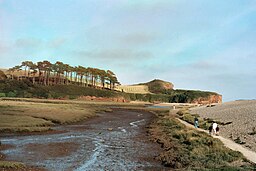macausland wrote:Is 'Wight' related to 'Wig, Wick, Uig etc'? As in Wigton, Wigtown, Wick and so on?
The Romans knew it as Vectis so the pronunciation seems to have been set at least as far back as them if not before.
I'd have thought this very likely. The Wiki article on wick or wich towns says wic/wick names apply to trade emporia which are usually coastal towns, and often associated with brine or salt springs or wells. Assuming the Isle of Wight was an important trade centre, it might be why Vectis was thought to be Ictis or Iktin.
Cotentin contains the 'tin' element. Would that be a connection with the tin trade? Apparently the whole area was fought over between the Bretons and Norwegians for quite a while.
Cote-en-tin certainly sounds like Tin Coast. I'm reading a book about prehistoric tin mining written by a Cornishman; his contention that Cornwall's tin was the best and most plentiful in Europe is unsurprising but enough 'unsuspected' tin mines have been found in France and elsewhere to leave shafts of darkness even in such an authoritative account.




